KSEEB Solutions for Class 8 Biology Chapter 4 Ecosystem Notes
The physical and biological world where we live is called our environment. The environment includes our physical surroundings like air (or atmosphere), water bodies, soil (land) and all the organisms such as plants, animals, human beings and micro-organisms like bacteria and fungi (called decomposers).
All these constituents of the environment are dependent on one another. So, all of them interact with one another and maintain a balance in the environment in a natural way.
Ecosystem
The various spedes of living organisms (plants and animals) interact among themselves as well as with their physical environments like soil, air and water. Living organisms interact with one another through their food chains in which one organism consumes another organism. The living organisms like plants interact with soil to get essential nutrients like nitrogen, phosphorus, etc. with air to get carbon dioxide and also with water bodies, for carrying out the process of photosynthesis.
Thus, the various communities of living organisms (called biotic communities) like plants and animals along with soil, air and water of that region form a self-sustaining or functional unit of the living world. This ‘functional unit’ or ‘system’ made up of living and non-living components which is capable of independent existence is called an ecosystem. The ecosystem includes all the communities of an area (all the plants and animals of an area) functioning with their non-living environment like soil, air and water.
We can now define an ecosystem as follows. An ecosystem is a self-contained unit of living things (plants, animals and decomposers), and their non-living environment (soil, air and water). An ecosystem needs only the input of sunlight energy for its functioning. The examples of ecosystems are: a grassland (meadow); a forest; a desert; a mountain; a pond; a lake; a river; and sea. When we say that a pond or lake is an ecosystem, then the word pond also includes all the aquatic life (plants and animals) which occurs in this pond water. The term ‘ecosystem’ is derived from the Greek word Oikos\ meaning a house’.
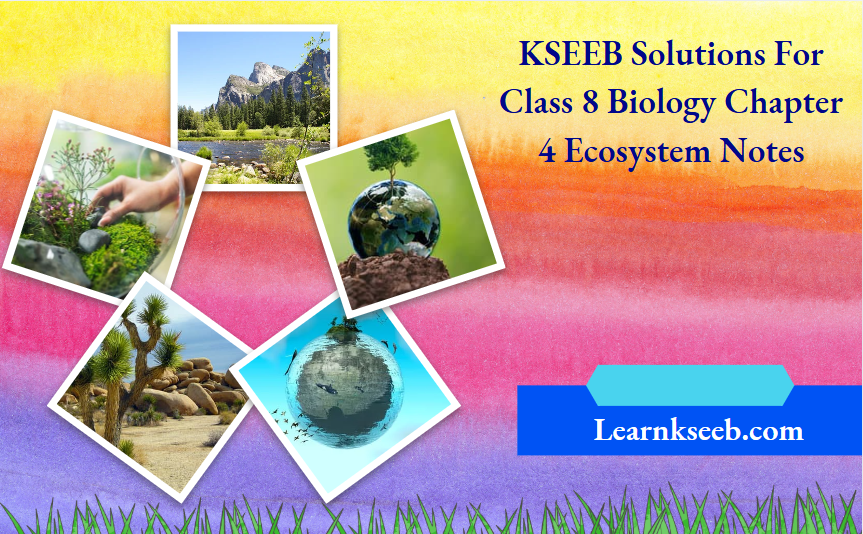
Class 8 Biology KSEEB Ecosystem Notes
Components Of an Ecosystem
All the ecosystems are made up of two main components—Biotic components, and abiotic components. Biotic components mean living components and abiotic components mean non-living components. Thus, we can now say that an ecosystem consists of non-living environment and the living biological community.
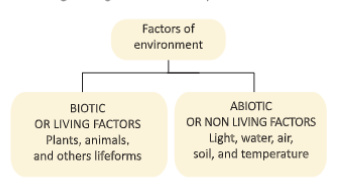 Biotic Components of an Ecosystem
Biotic Components of an Ecosystem
The biotic component of an ecosystem (or the living component of an ecosystem) is a community of organisms (like plants and animals), which is made up of many different inter dependent populations. The biotic community (or living community) of an ecosystem includes three types of organisms: producers, consumers and decomposers
Producer Organisms (or Autotrophs)
These organisms synthesize their own food. All the green plants are producers.
Consumer Organisms (or Heterotrophs)
These are the organisms which are dependent on others for food. All the animals are consumers. Consumers are further divided into the following groups:
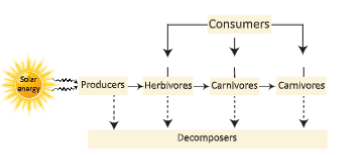
Herbivores
Some animals eat only plants (or their products). Those animals which eat only plants are called herbivores. The herbivores may eat grasses, leaves, grains, fruits or the bark of trees. Some of the examples of herbivores are cow, buffalo, goal, sheep, horse, deer, camel, ass, ox, elephant, monkey, squirrel, rabbit and hippopotamus. Cow is called a herbivore because it eats only plants (or plant products) as food. Herbivores are also known as herbivorous animals.
The animals which get their food by eating the producers (plants) directly are called primary consumers. Since herbivores obtain their food directly from plants (or producers), therefore, herbivores (like cattle, deer, goat, etc.) are primary consumers.
Carnivores
Some animals eat only other animals. They do not eat plant food at all. Those animals which eat only other animals as food are called carnivores. The carnivores eat the meat (or flesh) of other animals. So. we can also say that those animals which eat only the meat (or flesh) of other animals are called carnivores. Some of the examples of the carnivores are: lion, tiger, frog, vulture, kingfisher, lizard, wolf, snake and hawk.
Lion is called a carnivore because it eats only the meat (or flesh) of other animals like deer, rabbit and goat, etc. Carnivores are also known as carnivorous animals. The carnivores are usually of two types: small carnivores and large carnivores. The small carnivores which feed on herbivores (primary consumers) are called secondary consumers. For example, a frog, lizard, bird and fox, etc., are secondary consumers.
The large carnivores (or top carnivores) which feed upon the small carnivores (secondary consumers) are called tertiary consumers. For example, lion, tiger and birds of prey (such as hawk) are some of the tertiary consumers. Please note that humans (man) can be primary, secondary or tertiary consumers depending on the food which they eat.
KSEEB Class 8 Biology Solutions For Ecosystem
Omnivores
Some animals cat both, plants as well as other animals. Those animals which eat both, plants and animals, are called omnivores. In other words, the omnivores eat plant food as well as the meat (or flesh) of other animals. Some of the examples of omnivores are: man (human beings), dog, crow, sparrow, bear, mynah and ant. Humans are called omnivores because they eat both, plant food (such as grains, pulses, fruits and vegetables) as well as meat of animals (such as goat, chicken and fish). Omnivores are also called omnivorous animals.
Decomposer organisms (or saprotrophs)
These are the organisms which consume the dead remains of other organisms. Certain bacteria and fungi are decomposers.
Abiotic Components of an Ecosystem
The abiotic components of an ecosystem (or the non-living components of an ecosystem) include the physical environment like soil, water and air along with the inorganic substances like carbon dioxide, nitrogen, oxygen, water, phosphorus, sulphur, sodium, potassium, calcium and other elements present in them. The physical factors or climatic factors like light, temperature, pressure and humidity are also considered abiotic components of the ecosystem.
Sunlight
Intensity and duration of light play an important role in the life of an organism and in its activities. Green plants synthesize their food in the presence of sunlight. All animals depend on plants for food, either directly or indirecdy. So, sunlight is the ultimate source of energy for all living organisms. Length of a day also influences the reproductive cycle of poultry and birds. Most of the animals are active during daytime whereas there are animals which show activities during night time only. These animals are called nocturnal animals.
Air
Air is a mixture of several gases. Oxygen and carbon dioxide are two gases that support life on the Earth. Plants need carbon dioxide for preparing their food by photosynthesis. Both plants and animals use oxygen for respiration. Carbon dioxide is exhaled by animals. It is also added to the environment by burning of fuels. Oxygen is given out by plants during photosynthesis.
Water
Water is an important constituent of plants and animals. The human body is about 60 % water by weight. Plants absorb water from the soil through their roots. Water is a raw material essential for photosynthesis. Water acts as a medium of transport in the bodies of both plants and animals. It is through water that nutrients and waste materials move throughout the body. Water is one of the important factors for seed germination.
Water is the habitat for many organisms such as lotus, water lily fish, whale, shark and seahorse. Some organisms need oxygen dissolved in water to survive.
Humidity
Humidity is a quantity representing the amount of water vapour in the atmosphere or in a gas. Humidity also affects the type of organisms in an area.
Soil
Soil is the top layer of the Earth’s surface in which plants grow. It is a mixture of fine rock particles, minerals, microorganisms and decomposed bodies of plants and animals. Soil also contains water. Soil is sometimes called the ‘skin of the Earth’. Soil provides the medium for plant growth. Soil is home for many animals such as snails, earthworms and ants.
Ecosystem Class 8 KSEEB Questions And Answers
Temperature
The temperature determines the best climate and place for the survival of living organisms. It is a measure of warmth or coldness of a substance or environment. Sun’s heat reaches the Earth and makes it warm. Being just at the right distance from the sun, our planet Earth has a temperature that favours the growth and survival of living organisms. Moreover, the layer of air around it helps to retain the heat and not let it escape.
Without air, the Earth would be too cold to live! On the Earth, places near the poles are very cold while those near the middle part are hotter. That is why, very few organisms live in polar regions. Temperature affects the distribution of plants and animals on the Earth. Thus, we now know that the biotic components are closely dependent on abiotic components.
Interaction Within Biotic Components of Environment and Energy Flow
Food Chain
Anything which we eat to live is called food. Food contains energy. The food (or energy) can be transferred from one organism to the other through food chains. The starting point of a food chain is a category of organisms called producers. Producers are, in fact, plants. So, we can say that all the food chains begin with a green plant (or grass) which is the original source of all food. Let us take an example to understand the meaning of food chain. Suppose there is a field having a lot of green plants (or producers of food).
Now, plants can be eaten up by a rat. The rat, in turn, can be eaten up by a cat. And finally, the cat can be eaten up by a wolf. So, we find that there is a sequence (or order) in which one organism eats up the other organism (or consumes the other organism) to fill its belly. ‘Itie sequence of living organisms in a community in which one organism consumes another organism to transfer food energy, is called a food chain.
In simple words, a list of organisms (living beings) showing “who eats whom” is called a food chain. Let us make this point more clear by taking the example of a simple food chain operating in a grassland or forest. In a grassland or forest, there is a lot of grass (which are green plants). This grass is eaten up by animals like deer. And this deer is then consumed (eaten up) by a lion. This food chain tells us that grass is the starting point of this food chain.
The grass is eaten up by deer and the deer is then eaten up by a lion. In this food chain, grass is the producer organism which uses sunlight energy to prepare food like carbohydrates by the process of photosynthesis. This grass is then consumed by a herbivore called deer. And the deer is consumed by a carnivore called lion. A food chain represents a single directional (or unidirectional) transfer of energy.
For example, the above food chain tells us that the transfer of energy takes place from grass to deer and then to lion. It cannot take place in the reverse direction from lion to deer to grass. The study of food chains in an area or habitat helps us in knowing various interactions among the different organisms and also their interdependence.

Food Web
Food web is basically several interlocking and independent food chains in an ecosystem. Each living organism in the ecosystem is a part of multiple (different food) chains. For instance, a grasshopper and giraffe are herbivores. Similarly, different herbivores can be eaten by different carnivores. Thus, we see that there are a lot of food chains that prevail in an ecosystem which are interconnecting, overlapping and interdependent in nature. Hence, we can describe food web as a network of food chains that are linked together in one form or the other.

In this food web, we can see a network of numerous pathways along which the food (or energy) flows within grassland community.
This food web starts from the plants which is a producer and ends in top carnivore hawk (baaz). There are as many as six food chains operating in the food web shown above which have been marked 1,2, 3,4, 5 and 6 .
- In the 1st food chain, plants are eaten by rabbit and then the rabbit is eaten by hawk: Plants -»Rabbit -»Hawk
- In the 2nd food chain, plants are eaten by mice (or rats) and the mice are eaten by hawks: Plants ->Mice ->Hawk
- In the 3rd food chain, plants are eaten by-mice; mice is eaten by snake and then snake is consumed by hawks: Plants ->Mice -> Snake -> Hawk
- In the 4th food chain, plants are eaten by seed-eating birds and the seed-eating birds are consumed by hawks: Plants Seed-eating Bird -> Hawk
- In the 5th food chain, plants are eaten up by grasshopper and the grasshopper is consumed by hawks: Plants -» Grasshopper -»Hawk
- In the 6th food chain, plants are eaten by grasshopper, grasshopper is eaten by frog, frog is eaten by snake and then snake is consumed by hawk: Plants -> Grasshopper -> Frog Snake -> Hawk
Explanation Of Ecosystem In KSEEB Class 8 Biology
Trophic Levels
A food chain represents the flow’ of food (or energy) in a given set of organisms or living beings. The various steps in a food chain at which the transfer of food (or energy) takes place are called trophic levels. In fact, in a food chain, each step representing an organism forms a trophic level. In most simple terms, ‘trophic level’ means ‘feeding level’ of the organism. The plants are producers (or autotrophs) and constitute the first trophic level.
They fix up the sun’s energy’ and make it available for consumers (or heterotrophs). Herbivores (which feed upon plants) constitute the second trophic level. Carnivores (that feed upon herbivores) constitute the third trophic level. Large carnivores or top carnivores (w’hich feed upon small carnivores), constitute the fourth trophic level.
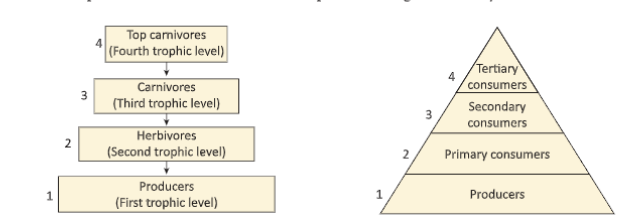
The various trophic levels in a food chain can be represented diagrammatically as follows:
Food Pyramid
An ecological pyramid is a graphical illustration to show the flow of energy through different forms of life. It has a large base which continuously narrows as we move upwards. The base of the pyramid represents producers (plants), then herbivores again primary consumers and then secondary and then finally tertiary or topmost consumers.
Pyramid of Numbers
The pyramid shown here represents the number of organisms in each trophic level hence called pyramid of numbers. In case of grassland ecosystem, the small plants and grasses are always higher in number. This number represents a decrease in the number as we move towards the apex consumer.

Pyramid of Biomass
This type of pyramid shows the relationship between the organisms of different trophic levels in terms of biomass. The biomass of organisms generally decrease from producers to the top carnivores in grassland ecosystem. Biomass is the total weight of dry mailer present in the ecosystem at any one time.
Flow of Energy
Green plants use solar energy during photosynthesis and convert it into chemical energy. The energy is transferred along food chains from one trophic level to the next. However, the amount of available energy decreases from one trophic level to the next. Energy flow in an ecosystem starts from the Sun which produces all the energy needed for life. The green plants or the producers are also called autotrophs. These organisms harness the energy of the Sun and convert it into sugars.
These organisms obtain 100 per cent of the energy they produce. The primary consumers which eat the autotrophs get the next most energy, but this is only 10 per cent of the original energy that the autotrophs get. Next, the secondary consumers, which eat the primary consumers get nutrients, but this is only 1 per cent of the energy that was originally in the plant. Tertiary consumers, at the top of the food chain eat secondary and primary consumers, and they only get 0.1 per cent of the energy originally produced by green plants.
KSEEB Class 8 Biology Chapter 4 Important Questions
Interaction Between Biotic and Abiotic Factors
All organisms and their life processes are greatly influenced by their interaction with other living organisms as well as with abiotic components of the environment. An ecosystem is a living system where all organisms live together in a community, abiotic and biotic and how they connect and interact with each other. It is formed by the interaction between the biotic factors and abiotic factors in a habitat. Some examples of ecosystem include pond ecosystem, forest ecosystem and sea ecosystem. We will discuss about forest ecosystem here.
Forest Ecosystem
A forest ecosystem consists of the community of plants, animals, microbes and all other organisms in interaction with the chemical and physical features of their environment forest ecosystem includes abiotic components such as, organic and inorganic substances present in the soil and atmosphere. It also includes dead organic debris. Biotic components include trees of different species, shrubs and other ground vegetation. Green plants conducting photosynthesis serve as the producers of a forest ecosystem.
Animals such as ants, beetles, flies, bugs, spiders and grasshoppers hopping around the trees feed on tree leaves. These arc called primary consumers. Secondary consumers include different kinds of birds, snakes, lizards crawling on trees. These secondary consumers mainly feed on these primary consumers or herbivores. The top consumers or tertiary consumers such as, tiger, lion, leopard feed on such animals.
Decomposers include wide variety of microorganisms including fungi and bacteria. The decomposers of the forest ecosystem break down dead plants and animals, returning the nutrients to the soil to be made usable by the producers.
Flora and fauna in a forest ecosystem
Flora means the plants which grow naturally in a particular area. Fauna on the other hand means animals living naturally in an area. There are different type of forests found in different regions of the world, for example tropical, temporal, boreal and arboreal forests. Therefore, the plants and animals living in forests of cold regions will be different from forests in warmer regions.
Role of flora
Plants maintain the natural forest ecosystem. They comprise of a variety of trees, herbs, shrubs, mosses. All animals, directly or indirectly, depend on plants for their food. For example, herbivores eat plants, and carnivores and omnivores feed on herbivores. So plants directly or indirectly provide food to all other organisms. The plants lake in carbon dioxide for photosynthesis and give out oxygen in the atmosphere. Animals lake in this oxygen while breathing.
Many animals such as monkeys and birds depend on plants for shelter. Some animals make holes in the trees and live there. Birds build their nests on the trees. There are a number of insects such as grasshopper, moths and ants that live on the trees.
Role of fauna
Animals play an important role in maintaining the ecosystem in a forest. Animals take in oxygen and release carbon dioxide while breathing. This carbon dioxide in turn is utilised by the plants in the process of photosynthesis and oxygen is released Animals help plants to reproduce through pollination. Animals such as insects, birds and other animals help the plants by carrying the pollen grains to various places for pollination. The animals help the plants with the process of seed dispersal.
The fruits are eaten by animals and birds. They then walk or fly to distant places and spread the seeds which come out with their droppings. Some seeds stick to the furs of the animals or birds and are carried from one place to the other.
Interdependence between Organisms
We have already studied that biotic components of the ecosystem cannot live independently. They are interdependent on each other. Similarly, different organisms in the forest along with plants and animals are all interdependent. They depend on each other for food, protection and shelter. Hence, it is important to control this biodiversity by managing the balance between the two. Some of the ways of interdependence are predation, parasitism and symbiosis.
Predation
In an ecosystem, predation is a biological interaction where a predator (an organism that is hunting) feeds on its prey (the organism that is attacked). The decline in the number of predators leads to an increase in the number of prey. An increase in the predator population leads to a decrease in the prey population. When prey population declines then predators get less prey and so the predator population will also decline.
For example, tiger feeds on deer, owls on rats etc. In this relationship, tiger is a predator and deer is prey. At times an animal could be a predator as well as a prey. For example, in a food chain frog is the predator for grasshopper (prey). In the same food chain, frog is the prey for the snake (predator).
Simplified Notes For KSEEB Class 8 Ecosystem
Parasitism
It is a non-mutual relationship between species, where one species, the parasite, benefits at the expense of the other, the host, sometimes without killing the host organism. Parasitism could be between animals, between plants or between animals and plants. In this interaction, the species smaller in size (the parasite) lives in or on the larger species, called the host. For example, fleas or ticks that live on dogs and cats are parasites. They live on the blood of the host animal.
Symbiosis
It is an interaction between two different organisms living in close physical association, typically to the advantage of both. Symbiosis is a mutually beneficial relationship. For example, a group of soil bacteria called Rhizobia live in the root nodules of leguminous crops. In turn, these bacteria fix atmospheric nitrogen turning it into usable form of nitrogen for the plants.
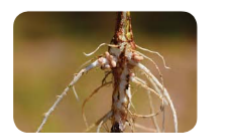
Conservation of Natural Resources
Natural resources are essential for the survival of human beings, plants, and animals. The water we drink, the food we cat, the air we inhale to survive are all either natural resources or obtained from natural resources. In absence of any of these resources, life will not exist on Earth. The human population has increased manifolds in the recent times. With the increase in population, there is a growing demand of the basic needs of humans.
The basic needs of the human beings are met by the natural resources. Hence, the consumption of natural resources has increased. But, the amounts of resources available arc limited in nature. Hence, it becomes imperative for us to use them wisely and judiciously. This judicious use of the resources in such a way that the resources can be used for a longer duration of time is known as conservation of resources. It is important to conserve these resources so as to stop or control the misuse of these resources.
The human activities have affected the natural resources in a negative manner. We now know that these resources are available in limited quantity. Hence, it becomes very important to conserve these resources.
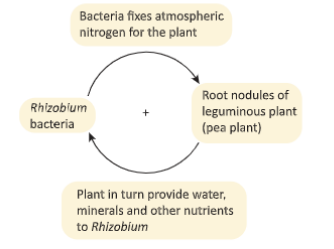
Keywords
- Ecosystem: The interaction of all the living organisms in a given area, along with the non-living components in their environment
- Biotic components: All the living components in an ecosystem
- Abiotic components: All the non-living components n an ecosystem Scavengers: Some carnivores and omnivores that feed on the flesh of dead animals
- Decomposers: Organisms that break down and feed on dead and decaying organisms
- Food chain: A series of organisms, each dependent on the next as a source of food
- Food web: Several interlocking and independent food chains in an ecosystem
- Symbiosis: A mutually beneficial interaction between two organisms.
Summary
- Our environment consists of both biotic and abiotic components.
- i he biotic components of forests are in the following sequence of food or trophic levels—producers, consumers and decomposers.
- All animals depend on plants directly or indirectly.
- Food chain is a sequence of organisms in which an organism is eaten by the next organism in the chain.
- Several food chains are interconnected under natural conditions. This network of food chains is called a food web.
- Energy is transferred along food chains from on= trophic level to another. However, the amount of available energy decreases from one trophic level to the next.
- At every level of an energy pyramid, the organisms get 10% of the energy from the previous level.
- Plants and animals are interdependent. Some ways are—predation, parasitism and symbiosis.
- The abiotic components of the environment are—sunlight, air, water, soil and temperature.
- Forests can be classified into—tropical rainforest, temperate forest and boreal forest.
